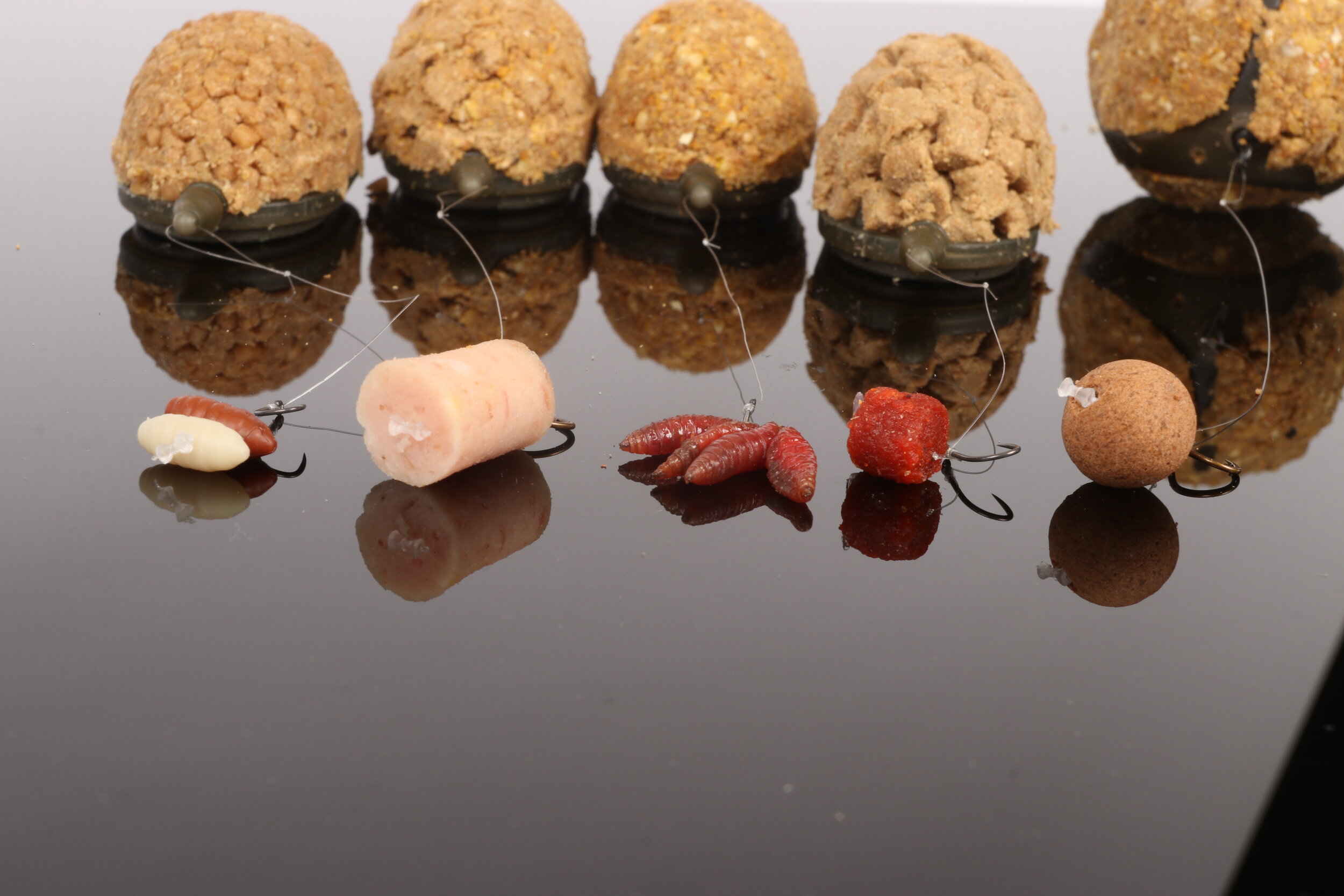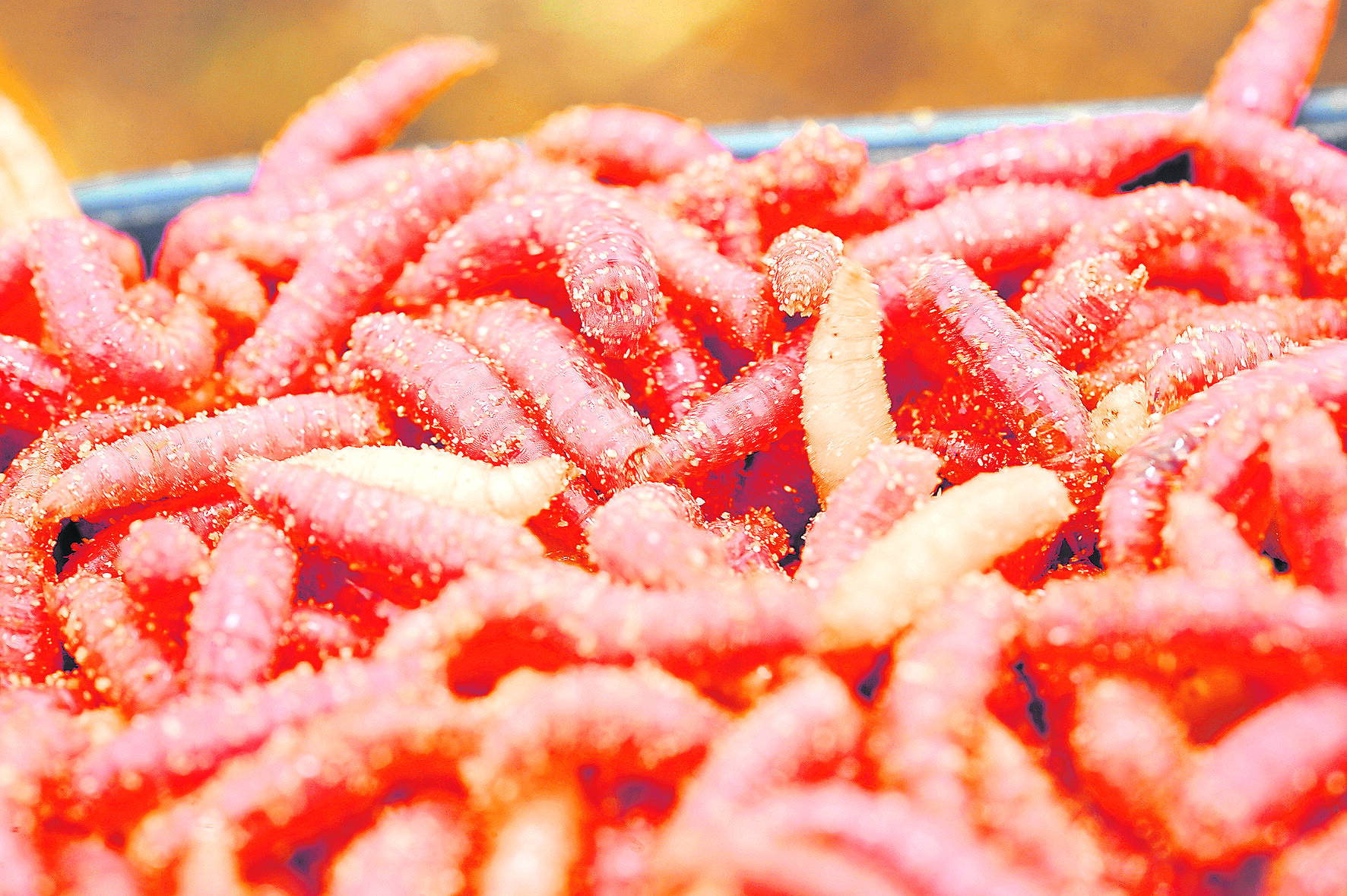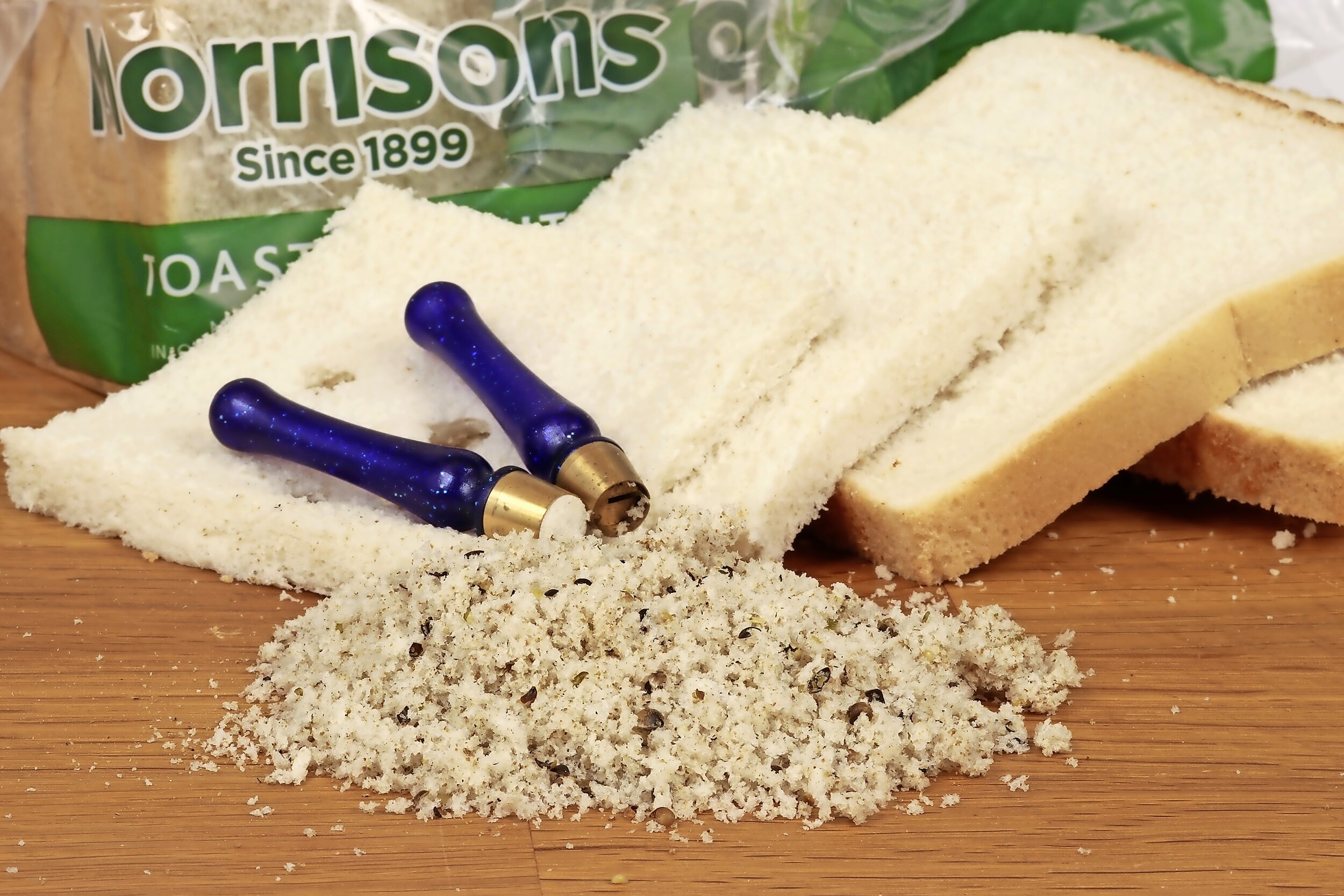20 amazing carp fishing bait tips
When it comes to Carp fishing bait it can be as simple as hair-rigging a boilie straight from the bag and waiting for the alarm to sing or putting that extra time and effort into adapting your tactics, and especially your baits, to the conditions in front of you. There are literally hundreds of little tips that can be employed, Which is why we want to take a look at some of bait expert Dr. Paul Garner's best kept secrets that are guaranteed to catch you more carp.
1) Don’t neglect meat
In a world where carp fishing is dominated by boilies it is very easy to overlook how effective meat is as a big carp bait. Easy to flavour, of an ideal texture, and with masses of natural attraction, meat has a lot going for it. The biggest problem can be that it’s quite a soft bait and can be whittled away by smaller fish. To avoid this, use larger chunks.
To stop meat flying off on the cast try frying it to give it a tough skin. A large boilie stop is also critical. I use pellet stops, which not only have a large surface area to hold the bait on, but also pull into the bait, leaving it virtually invisible.
2) Slick-up floaters
Adding a small amount of fish or hemp oil to floating pellets can boost their attraction. Just add a tablespoonful of oil to a kilo of pellets and shake well so that they are evenly covered.
Another benefit of adding oil is that it will flatten the water surface on windy days, creating a slick that makes it much easier for you to spot the hookbait.
3) Why carp love hemp
Hempseed mimics tiny freshwater snails, and carp can become preoccupied on it to the exclusion of all else. The oily liquid produced when hemp is soaked is also incredibly attractive to carp and contains amino acids and natural omega oils. I’ll often use just a handful to kick-start a swim that I am baiting with boilies. The hemp will pull in the carp and stimulate them to start looking for food, in this instance a scattering of boilies.
4) Shelf-life or frozen?
Modern preserving methods mean that shelf-life baits often contain very few additives. They rely mainly on being dehydrated to stop them from going off. This is the same drying process that is used with pellets, and in itself does not put the fish off.
So if tiny amounts of preservatives do not affect these boilies, what are the advantages of using freezer baits over shelf-lifes?
They tend to be softer, and get to work faster in the water as they release their attraction. Freezer baits do need to be kept frozen, though, and should be discarded once they have been out of the cold for more than a few hours.
So for short sessions it’s frozen, but on longer trips it’s shelf-lifes.
5) Give boilies a good soak
Shelf-life boilies are produced by air-drying. This removes much of the moisture from the baits, giving them a hard texture and a firm outer skin. While this stops them going off, it does mean that it can take quite a long time for them to soften in water and release the locked-in attractors.
To overcome this problem it’s always best to soak your baits the night before a trip in a bucket of water– try not to use chlorinated tapwater if you can help it.
Much better is to use the water left over from cooking particles, such as hemp. Alternatively, add some boilie dip to the water to not only soften them, but also give your baits an extra boost.
6) How much bait?
Carp eat a lot – up to three per cent of their body weight every day when conditions are right – but does this mean that we need to use a lot of bait to catch them?
Most carp recognise pellets and boilies as food, so one bait put in front of them can be enough. Introducing more can be important to hold them in the swim and to encourage them to feed confidently.
I tend to introduce no more than a handful that I think one carp can eat. Often my hookbait is among the last to be eaten, meaning that I have enough bait out there to interest the fish but don’t have to wait long for a bite.
7) Prepare salty particles
Salt is a popular additive for particles and spod mixes, but it’s not just a matter of adding a handful to your bait.
The best types are sea salt and rock salt, both based on sodium, a tricky element for freshwater fish to consumer. These salts also contain useful trace elements that the carp may be able to detect in the water. Avoid common table salt, as this is much less effective.
Because salt can dry out particles and prevent them from splitting, always add it after the baits have been cooked – ideally as they are cooling down, as this will help the salt to dissolve. Add a tablespoonful to each pan for best results.
8) Mix up your feed
One of the most important things I have learned about surface fishing is how carp can become very picky about what they eat. They can easy become preoccupied with tiny baits.
To overcome this problem I vary what I feed. At the start it’s almost exclusively with tiny Riser pellets, but as the fish gain confidence I quickly shift to a 50:50 mix of Riser pellets and 11mm floating pellets.
Eventually, if the fish are competing for the bait and feeding hard, I switch to just the larger baits, as these better match the size of my hookbaits.
9) Always carry paste
A wrap of paste can double the number of bites, thanks to its fast leak-off of attraction – often far more than from an equivalent boilie or pellet.
Most bait companies produce a dedicated paste that matches their boilies, which makes sense to use, but there are alternatives.
A paste made from ground pellets and bound together with egg works very well indeed. An even simpler option is to cover your bait with some cheese spread!
10) What size boilie
Boilies come in a wide range of sizes, so which is right for your fishing?
It’s worth bearing in mind the size of fish you are after. For single-figure fish, 8mm-10mm baits are best. A double will easily eat a 12mm-15mm bait, a twenty 18mm and beyond.
Boilies were originally developed to help deter species other than carp, so if you are being bothered by bream, switch to a larger bait. While 15mm boilies are by far the most common size used in the UK, why not try something different?
Few anglers use 20mm or even 24mm boilies, although even a modest-sized carp will consume these easily.
11) Add some fish
All coarse species love the taste of fish, and carp are no different. Try adding a small amount of cooked fish to your spod and PVA bag mixes to give them a real boost.
Tuna is the oily fish most often used for this job, but other cheaper and more sustainable options do it just as well. Try tinned pilchards or sardines in oil or brine as a substitue for tuna.
Mash the contents of a tin up with a fork and add to your spod mix.
12) Perfect tiger nuts
Tiger nuts are almost impervious to small fish, are very attractive to carp, last indefinitely on the hair and are cheap to buy. You only need a handful for a session, often mixed with some hemp if you want to introduce more feed. Tigers can be bought ready-prepared but I still like to make my own, which is a simple process.
Start off by soaking the dry tiger nuts for a minimum of 24 hours. This is to allow them to swell up to their full size, as they come in a dehydrated form. Next, boil them for at least 20 minutes. They will not go soft, unlike other particle baits, but boiling will ensure that they are cooked through and cannot germinate or swell further.
Finally, freeze them in small session-pack batches ready for use.
13) Try a zig
It takes confidence to cast out a single piece of rig foam or a trimmed-down pop-up on a long hooklength and expect to catch a carp in mid-water but believe me, it is a tremendously effective tactic at certain times.
The secret is to understand when it is most likely to work.
In spring, when the sun is warming the upper layers of the water, carp will often be found up in the water, especially in swims sheltered from any cold winds.
In the middle of summer carp will once again come to the top on hot, sunny days to absorb the sun’s warmth and feed on the surface.
Both these times are ideal for zig fishing and either a lone zig, or spodding soup over the hookbait, can be a very effective tactic.
14) Double-up for big fish
There’s a lot to be said for the old adage ‘use big baits for bigger fish’, especially where carp are concerned. Carp have big mouths and so can easily handle larger baits than we might commonly imagine.
While 15mm boilies might be the most commonly used, why not double up, fishing two on a hair to give yourself a larger bait? Alternatively, try using a 15mm bottom bait and a 10mm pop-up to create a slow-sinking ‘snowman’ presentation.
15) Flavour fake baits
Fake baits work very well straight from the packet, but I also like to keep some soaking indefinitely in a tub of Betalin for those days when they need an extra boost.
This is particularly true when zig fishing, as the sickly-sweet flavour of this additive slowly leaches out of the bait, creating much more attraction than the single unflavoured hookbait could ever do.
Another favourite is to soak bottom-baits in Crustacean extract. This super-pongy additive is loved by carp and is perfect for flavouring plastic corn, giving it a massive edge over unflavoured plastic.
16) Which colour is best?
Fashions in bait colour come and go, yet some general rules still apply when it comes to choosing the right one. Because carp are cold-blooded, their senses become dulled in winter, so bright coloured baits make a lot of sense.
This is the time to concentrate on using white and pink baits on the hook and as feed.
In summer, darker colours are often more effective. Try browns, purples and reds at this time of the year. Especially in clear water, these darker colours are less likely to spook the fish when they are feeding over a bed of bait. It is worth trying one bright bait on the hook, as this can often bring a fast bite.
If you are looking for an edge, then try making some baits in a less popular colour. Green and blue are bait colours that the fish rarely see, but they can prove to be very effective.
17) Use stringers
A very neglected tactic, but one that I use a lot, is to attach a three-bait PVA stringer to the hook. This can be wrapped around the hook to ensure that no weed can catch on the hook point as it sinks. The extra weight of the freebies also means that the rig is much less likely to tangle on the cast.
Having a little pile of baits with the hookbait at the centre can often bring extra bites, as it makes the hookbait really stand out.
18) Make a wafter boilie
Wafter hookbaits are very much the rage at the moment, for good reason. These semi-buoyant hookbaits only just sink, making them much easier for carp to suck in, as they balance the weight of the hook well. Using wafters not only means that the chances of the hookbait getting into the carp’s mouth are higher, but it also goes further in, giving improved hook-holds.
Not all baits are available as wafters, but you can make your own. Use a boilie corer to remove the centre of a boilie and then insert a matching piece of rig foam. By adjusting the amount of foam used you can control the buoyancy of the finished bait very accurately.
19) What type of pop-up
When I want a really bright hookbait that will stand out to any passing carp, a shelf-life ‘airball’ pop-up is the best option. These baits are really bright, stay buoyant for a long time, and can be left out for days on end if need be. If I want a pop-up that matches my freebies, a cork ball or cork dust pop-up is a better option.
Make these by moulding a small amount of boilie paste around the hookbait and then boiling it to make a pop-up that perfectly matches the feed. Cork baits stay buoyant for a long time, but the skin of boilies will eventually break down – okay if you are leaving them out overnight, but not if you want to leave the baits out indefinitely.
20) Add some flake
A tactic that the carp are unlikely to have seen on most venues is fishing a single boilie hookbait over a carpet of boilie crumb.
Make crumb by blitzing boilies in a food-processor, or buy it ready-made. Try not to reduce the bait to dust. I like to have a mixture of particle sizes, from lumps of boilies down to a crumb.
Because crumb is quite a fine feed it will get moved around by the undertow and by carp in the swim, so it is best to bait up little-and-often. Try introducing a couple of handful every hour or two for best results.




















